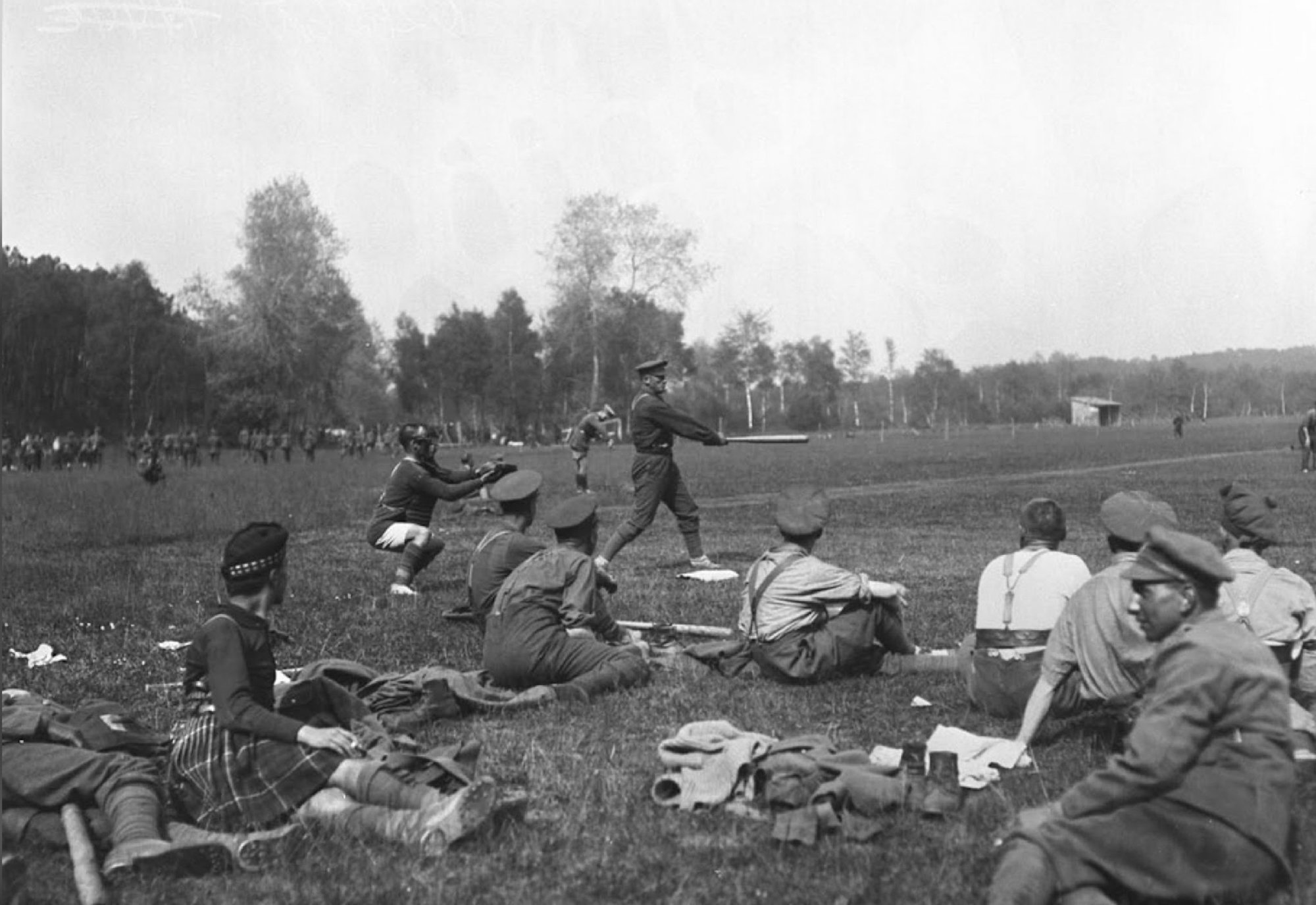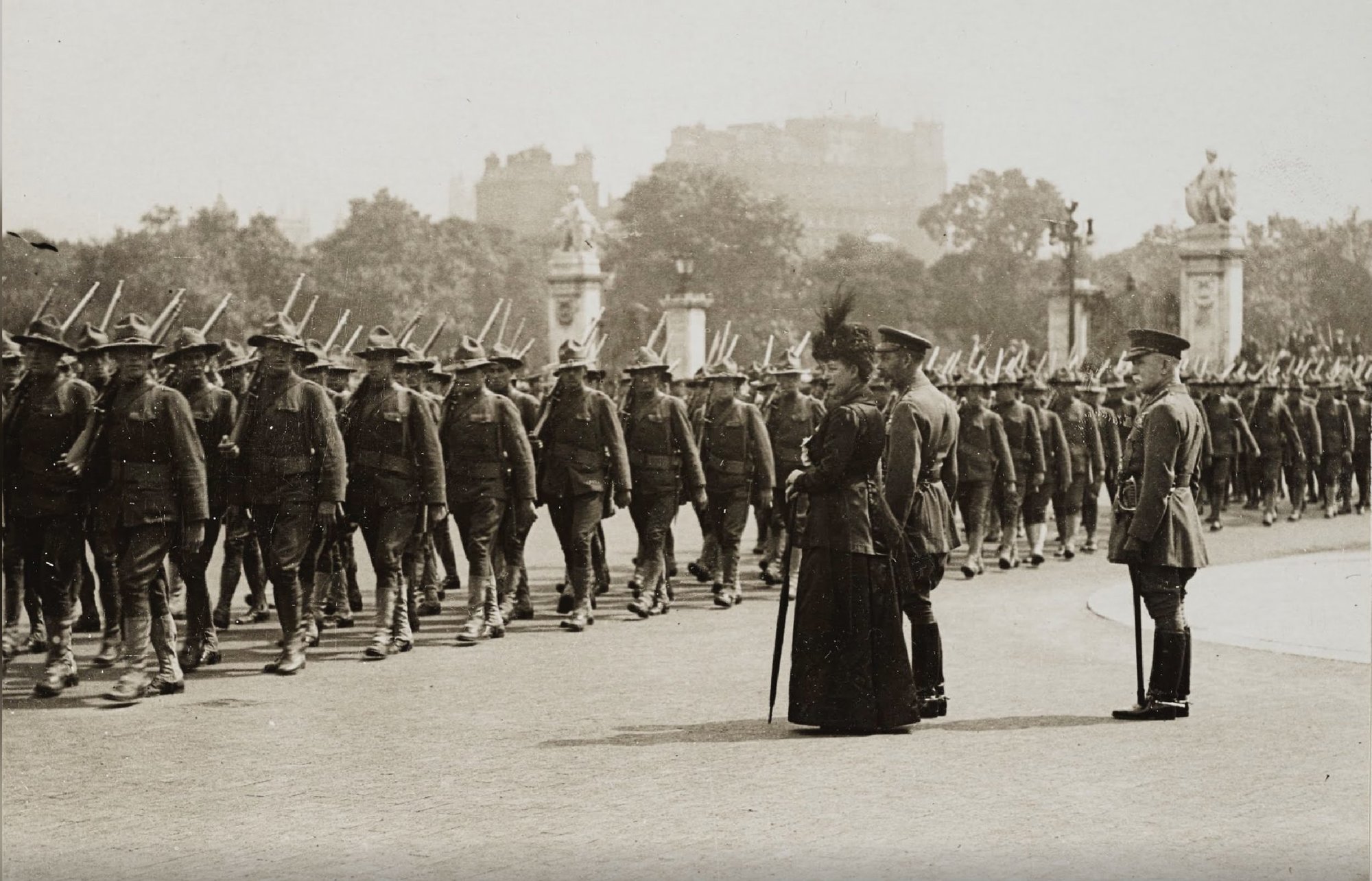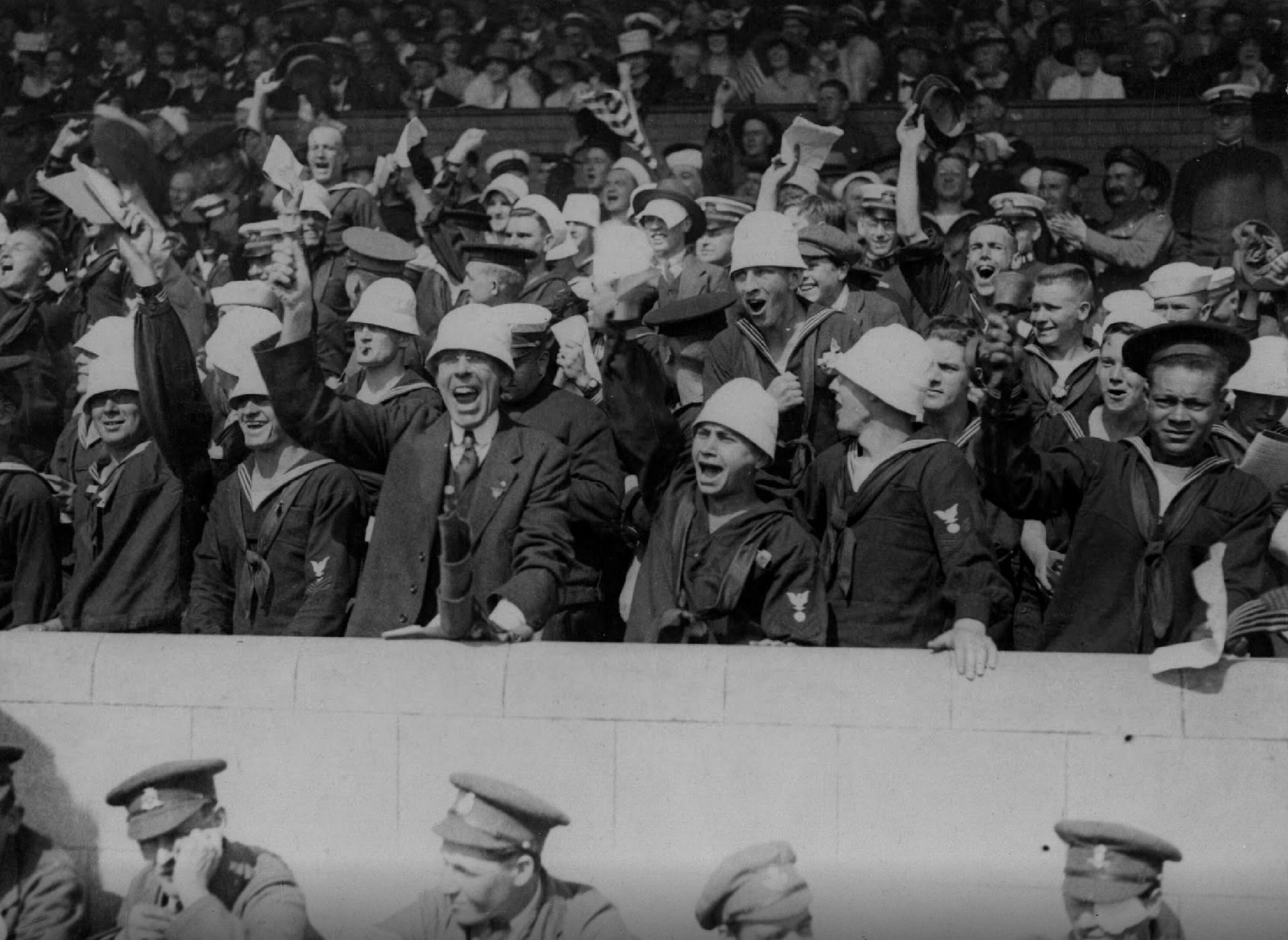The World War I Army-Navy Baseball Game Played for the King of England

By late 1917, well-known major leaguers were entering the armed forces and many continued to play ball. The YMCA, Knights of Columbus, Jewish Welfare Board, and other war charities often supplied playing equipment to American doughboys. Pictured are Americans playing baseball in France in 1918. Photo courtesy of the Anglo-American Baseball Project Inc.
On July 4, 1918, the biggest sports competition in Europe wasn’t soccer, rugby, or cricket. Rather, two teams of “Yanks” — one from the Army and another of Navy personnel, drawn from soldiers and sailors sent to England for World War I — squared off in what British newspapers called the “extraordinary baseball match” pairing teenagers off hometown sandlots with major leaguers. The game brought a stoppage to wartime London and was watched from the stands by no less than King George V and Winston Churchill.
The game was the brainchild of Rear Adm. William Sims. The president of the Naval War College had sailed to London on a secret mission in April 1917. It was the first time the United States had entered a coalition force, and Sims was the first senior American commander to arrive on the European front. In order to improve morale among the American Expeditionary Forces in Europe, Sims established the Anglo-American Baseball League and informed all inbound ships from America to Europe to carry baseball teams.

The arrival of the foreign pastime brought forth American culture and identity and Allied cohesion the Europeans hadn’t seen before. Early on, 30 expatriate American businessmen in the London area had formed the new league, and by the summer of 1918 eight teams were entertaining Allied troops stationed in the area. The four American and four Canadian teams played routine games throughout the year, but Sims prepared to make the day of America’s national independence one not to soon forget.
Ahead of the special planned baseball game held at Stamford Bridge, home to the Chelsea football club, umpire Arlie Latham visited the gardens of Buckingham Palace to teach King George V how to throw out the ceremonial first pitch. “He had a middling fair arm but it was hard to break him of the habit of his stiff arm way from playing cricket,” Latham said, who had played for the New York Giants and was known as a brawler and jokester. He told the monarch the key to woo the crowd was “More speed!”
Although a protective netting canceled the king’s honorary pitch, he still took the field before the game to shake hands with the team’s captains. He even used a fountain pen to sign and date the game ball, which would be presented to the game’s winner, and ultimately to President Woodrow Wilson. Also in attendance was a young Winston Churchill, who made a speech.
One of our favorite #ww1 #baseball #cartoons, by #RobertRipley, after the #July4 game at #Stamford Bridge in 1918 — #greatwar @USArmy @USNavy @WW1CC pic.twitter.com/D9nHidSEN8
— WW1 Baseball (@ww1baseball) April 19, 2018
For security, seven barrage balloons orbited above the stadium to prevent any surprise aerial attacks from German warplanes.
Allied soldiers and spectators poured into the stadium, with an estimated attendance of 34,000. The Army and Navy baseball clubs arrived in coaches after receiving cheers from Londoners lined up along the streets. The Army wore light green and the Navy dark blue with red piping, their uniforms stitched together courtesy of the American Red Cross.

Pitching for the Army was former Detroit Tigers pitcher (and dentist) Ed “Doc” Lafitte, who in 1914 had thrown a no-hitter that was not a shutout for the Brooklyn Tip-Tops, beating the Kansas City Packers 6-2. The Navy had future Hall of Fame left-handed pitcher Herb Pennock, formerly of the World Series champion Philadelphia Athletics. In nine innings of play, the Navy squeezed out a 2-1 victory. Sailors rushed the field and celebrated with a snake dance across the Stamford Bridge playing grounds. Their celebration was short-lived, as the British military band played “The Star-Spangled Banner” — although not officially adopted as the national anthem by the US until 1931 — and the players stopped to respect the song.
“The meaning of this most significant of all ball games was carried along the air,” said the London Times, according to the book Nine Innings for the King: The Day Wartime London Stopped for Baseball, July 4, 1918. “There was more cheering afterwards, but cheering of a radically different kind. The crowd awoke to consciousness that the afternoon had passed into the history of two great nations.”
Read Next:

Matt Fratus is a history staff writer for Coffee or Die. He prides himself on uncovering the most fascinating tales of history by sharing them through any means of engaging storytelling. He writes for his micro-blog @LateNightHistory on Instagram, where he shares the story behind the image. He is also the host of the Late Night History podcast. When not writing about history, Matt enjoys volunteering for One More Wave and rooting for Boston sports teams.
BRCC and Bad Moon Print Press team up for an exclusive, limited-edition T-shirt design!
BRCC partners with Team Room Design for an exclusive T-shirt release!
Thirty Seconds Out has partnered with BRCC for an exclusive shirt design invoking the God of Winter.
Lucas O'Hara of Grizzly Forge has teamed up with BRCC for a badass, exclusive Shirt Club T-shirt design featuring his most popular knife and tiomahawk.
Coffee or Die sits down with one of the graphic designers behind Black Rifle Coffee's signature look and vibe.
Biden will award the Medal of Honor to a Vietnam War Army helicopter pilot who risked his life to save a reconnaissance team from almost certain death.
Ever wonder how much Jack Mandaville would f*ck sh*t up if he went back in time? The American Revolution didn't even see him coming.
A nearly 200-year-old West Point time capsule that at first appeared to yield little more than dust contains hidden treasure, the US Military Academy said.












